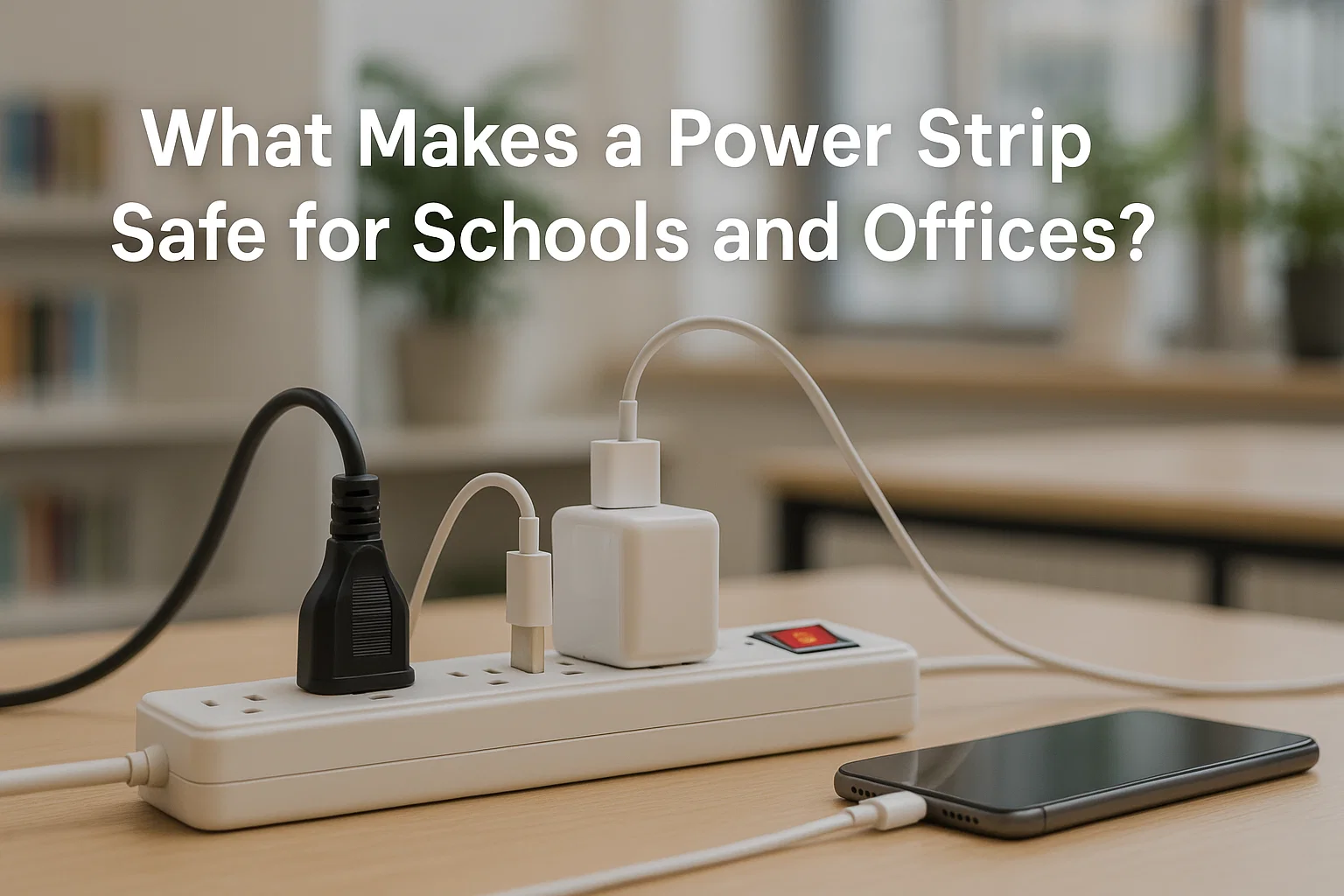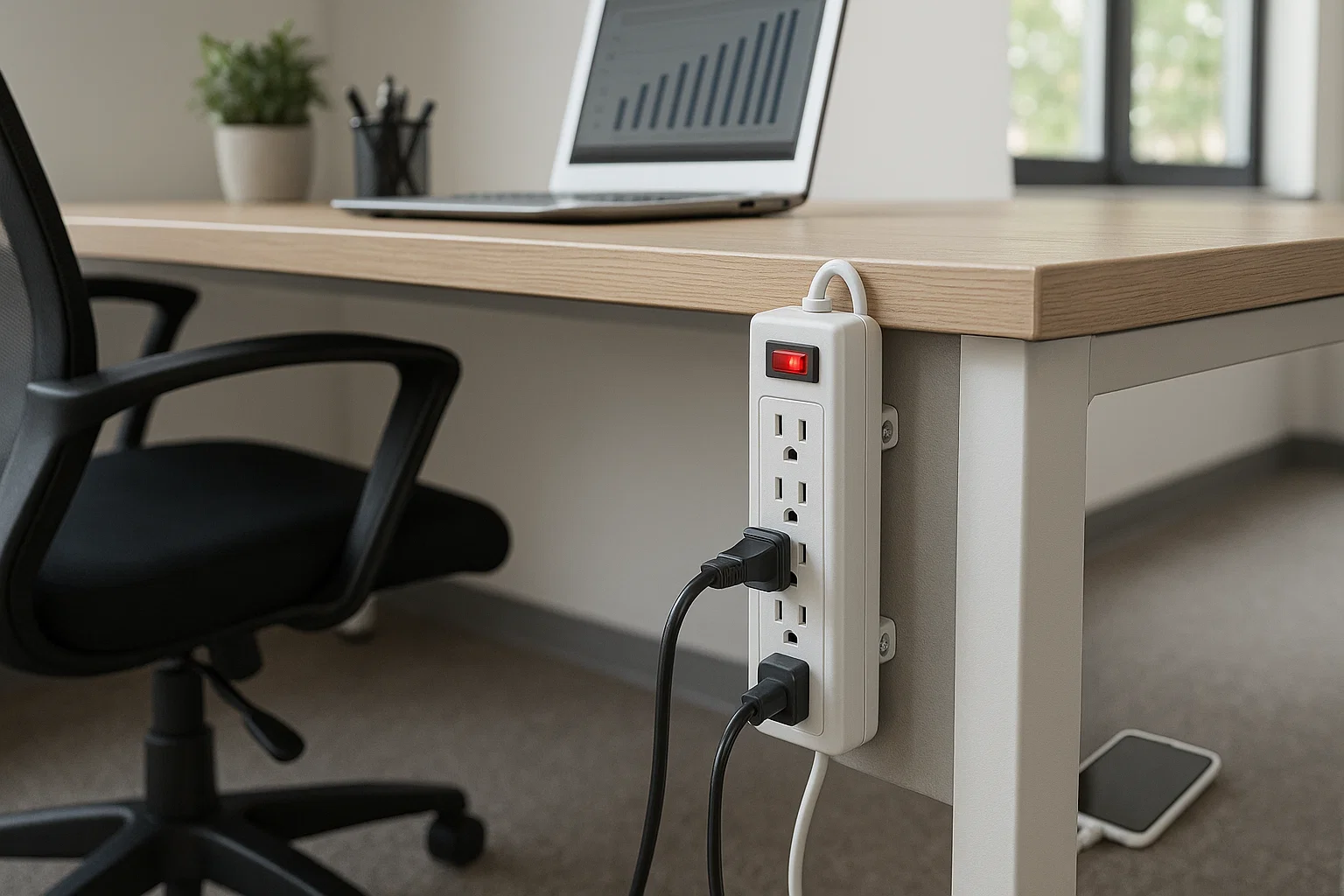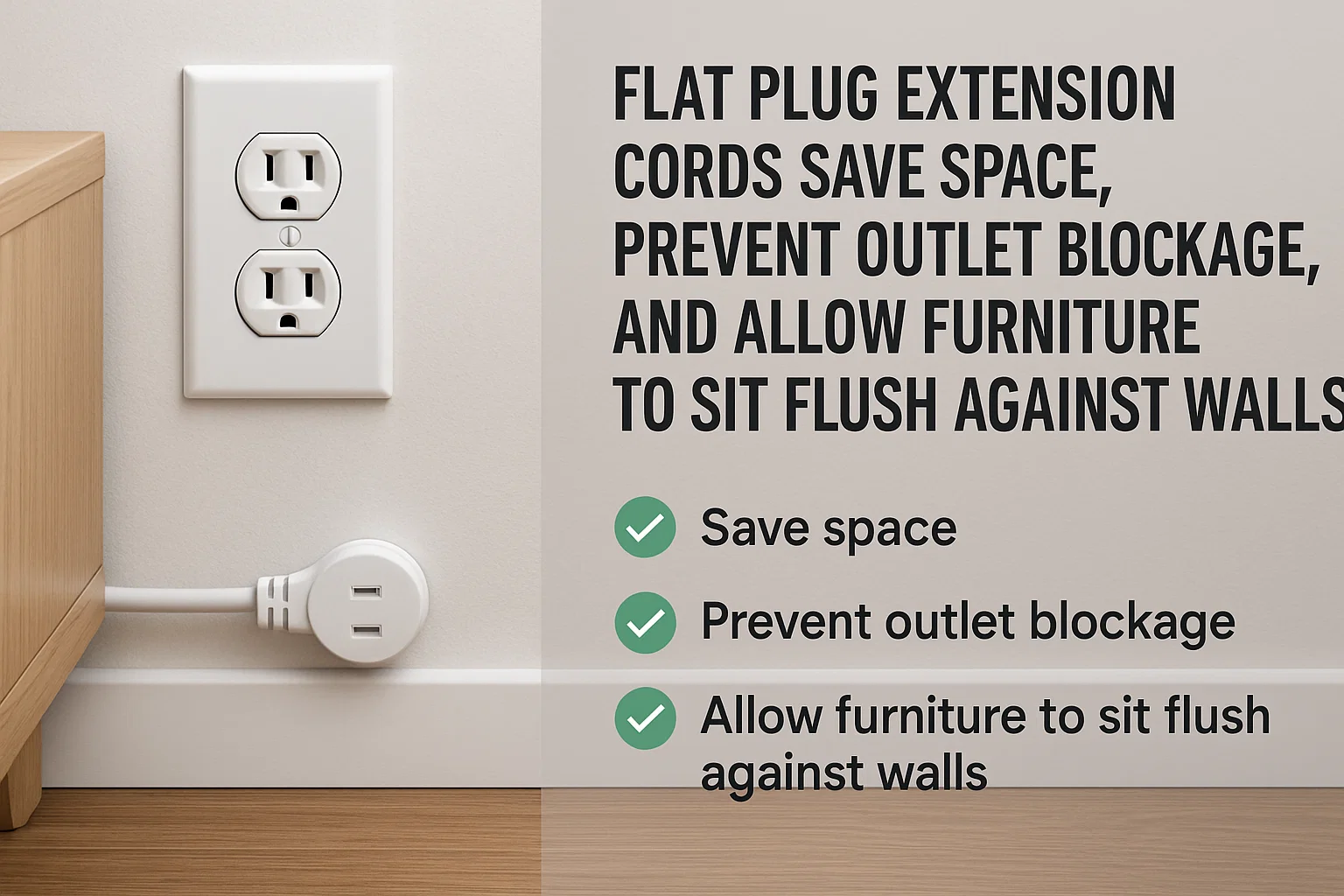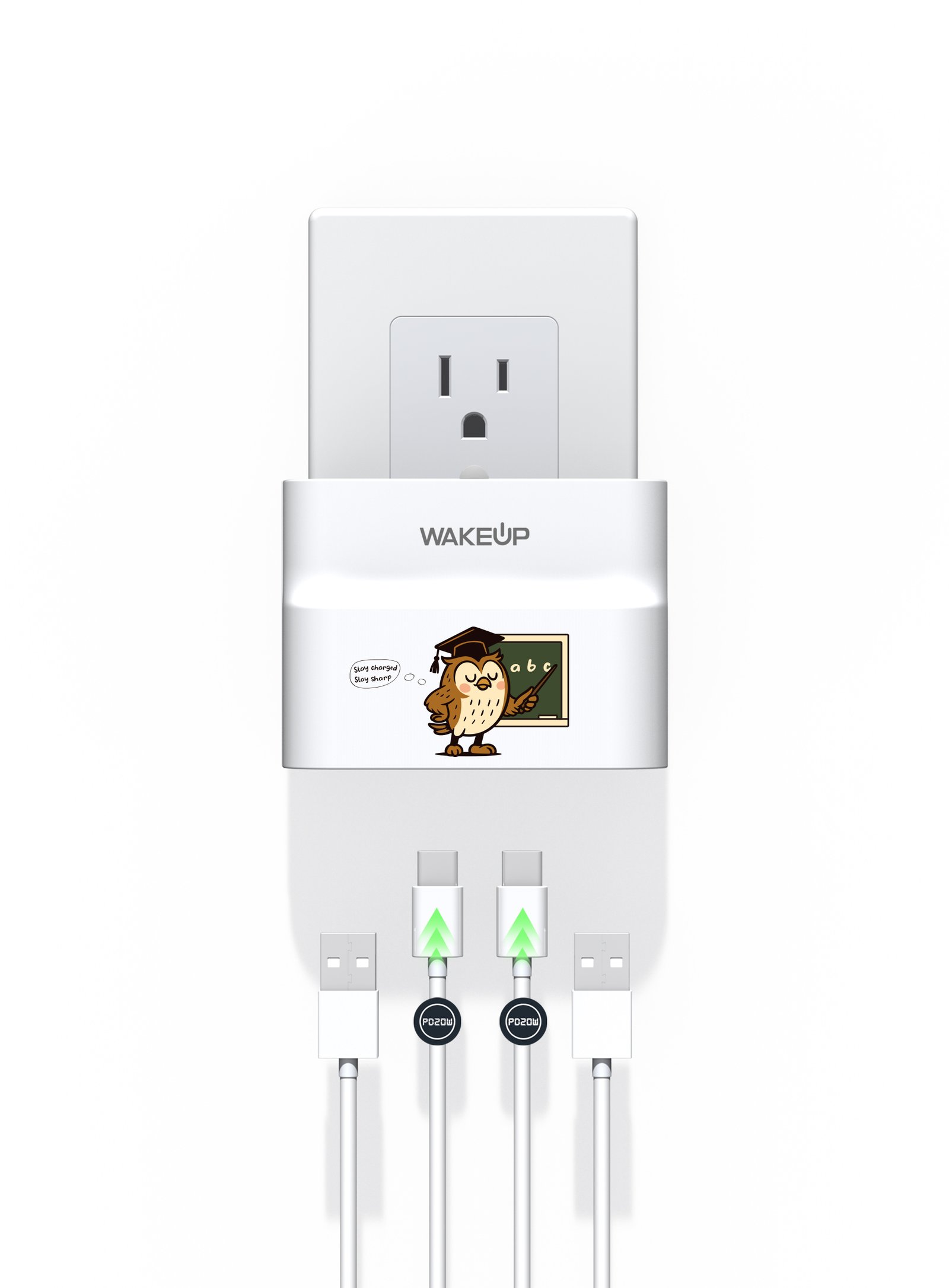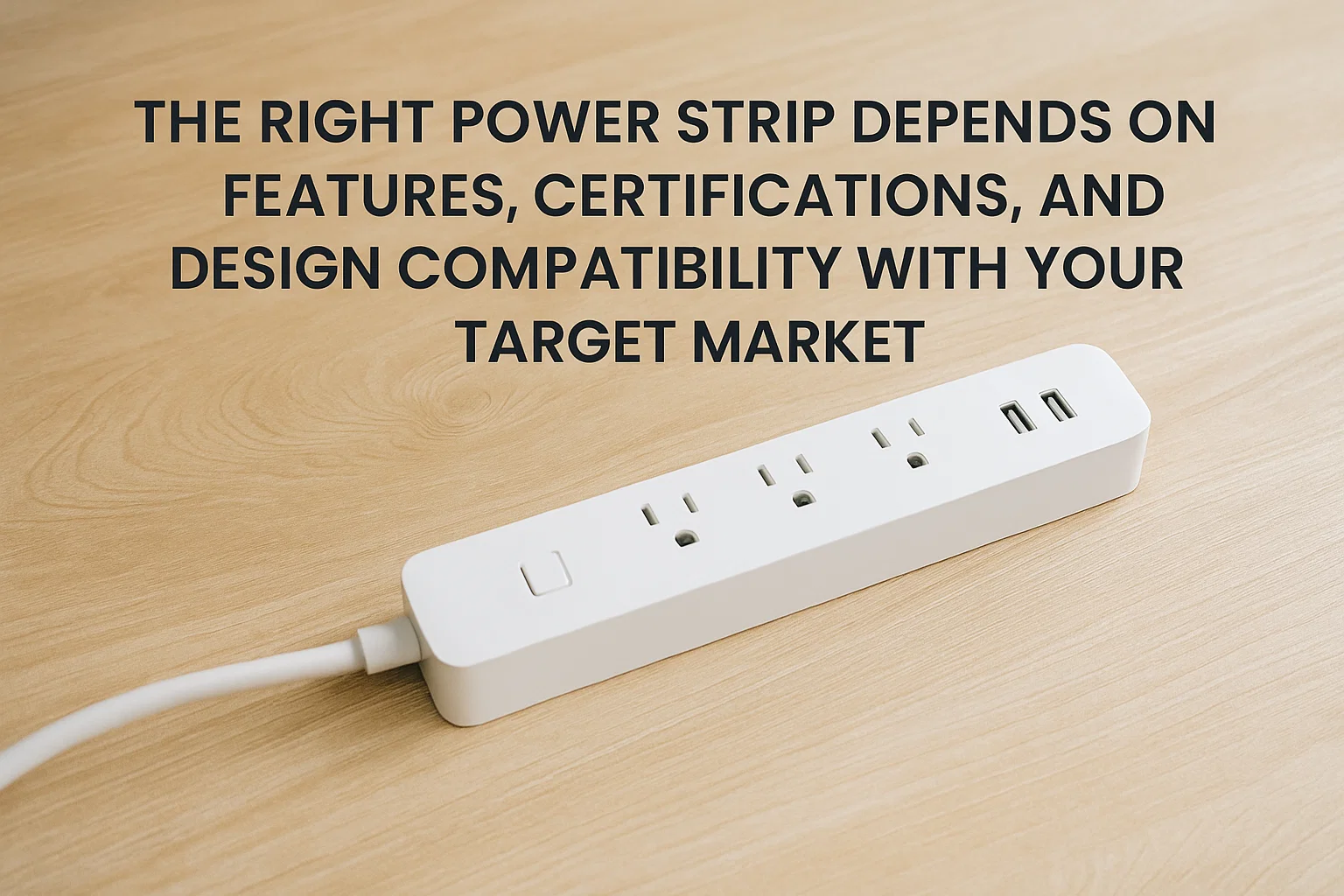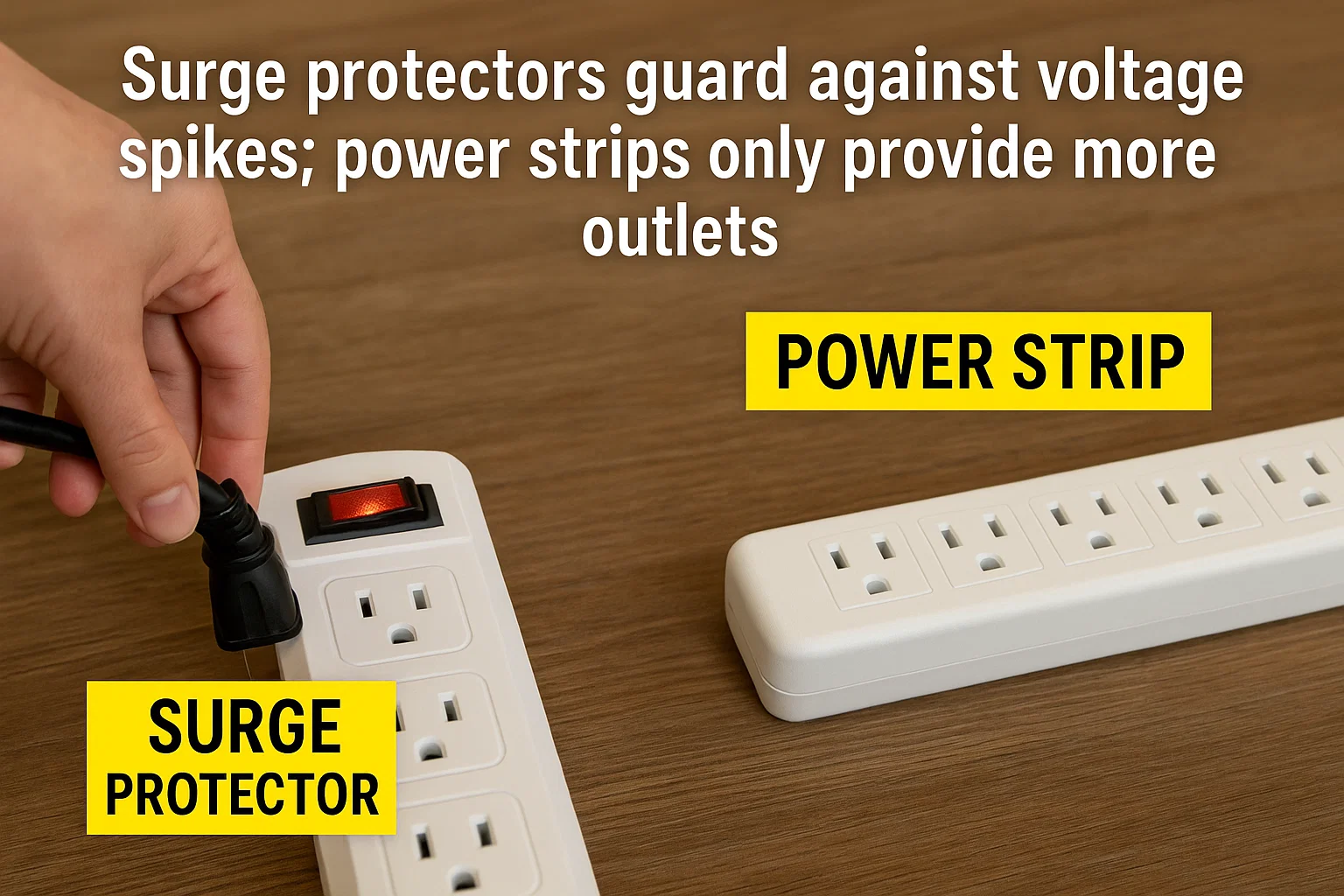
Struggling to explain surge protectors vs. power strips? Here's how I help my clients make smart decisions.
Surge protectors guard against voltage spikes; power strips only provide more outlets. Here's how to tell the difference.
Don't let your customers walk away confused. Let me break it down clearly and simply.
What is the real difference between surge protectors and power strips?
Too many buyers think they’re the same. That’s a problem I run into often.
Power strips only increase socket availability. Surge protectors add safety from electrical surges.
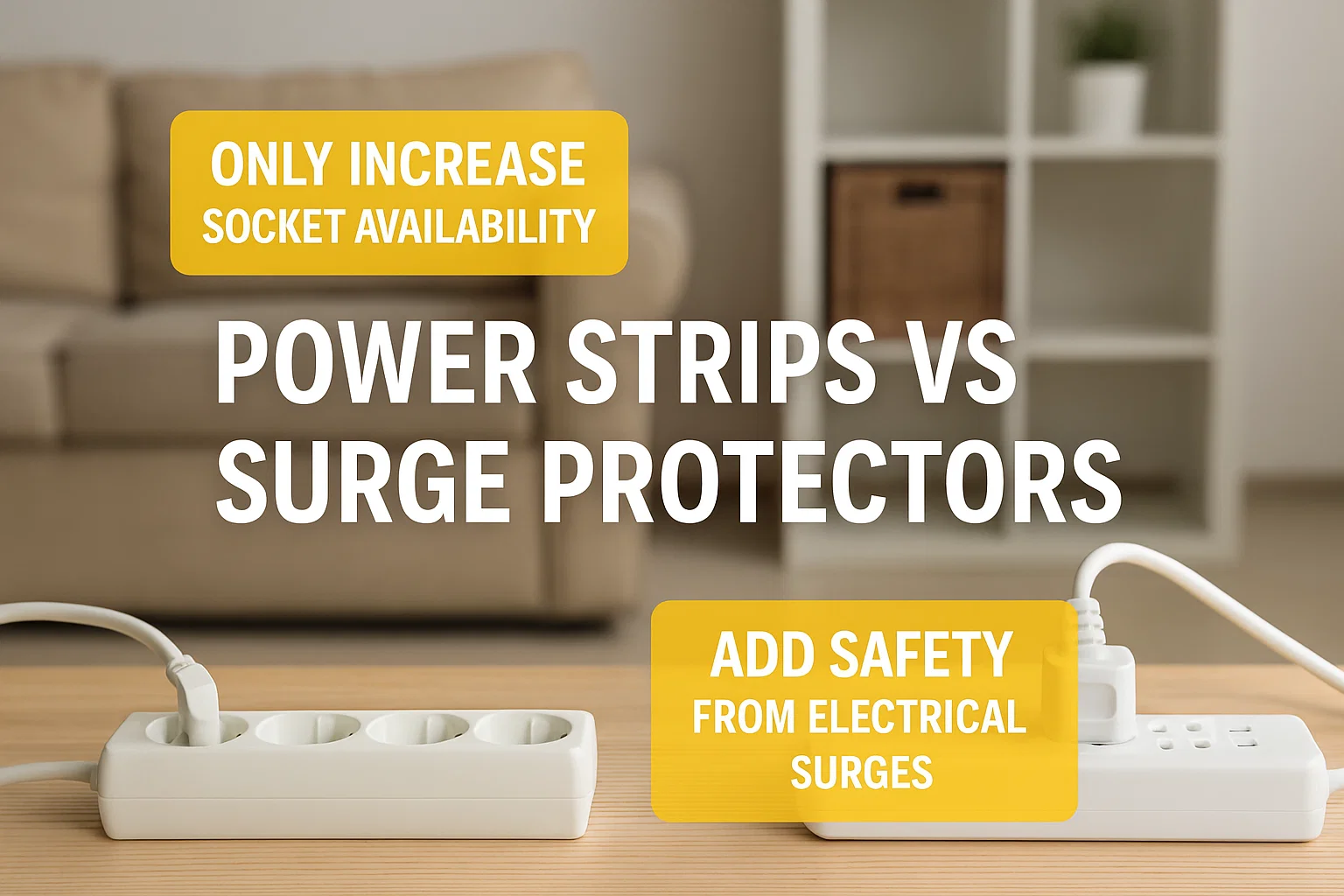
Is it just about surge protection?
Not quite. A surge protector includes internal components like MOVs (Metal Oxide Varistors) that absorb high voltages. A basic power strip doesn't.
| Feature | Power Strip | Surge Protector |
|---|---|---|
| Number of AC outlets | 3–8 | 3–8 |
| USB charging ports | Optional | Optional |
| Surge protection | No | Yes (measured in Joules) |
| Indicator light | No | Yes (Grounded / Protected lights) |
| Safety certifications | Basic | Often ETL/cETL, UL, or CE listed |
| Typical use | General appliances | Sensitive electronics |
Many buyers mistakenly choose power strips when they need surge protection. As a supplier, I always clarify that.
Does surge protection really make a difference?
Some clients say, "We’ve never had a surge problem." Until they do.
Surge protectors defend against sudden voltage spikes caused by lightning, grid faults, or high-power appliances.
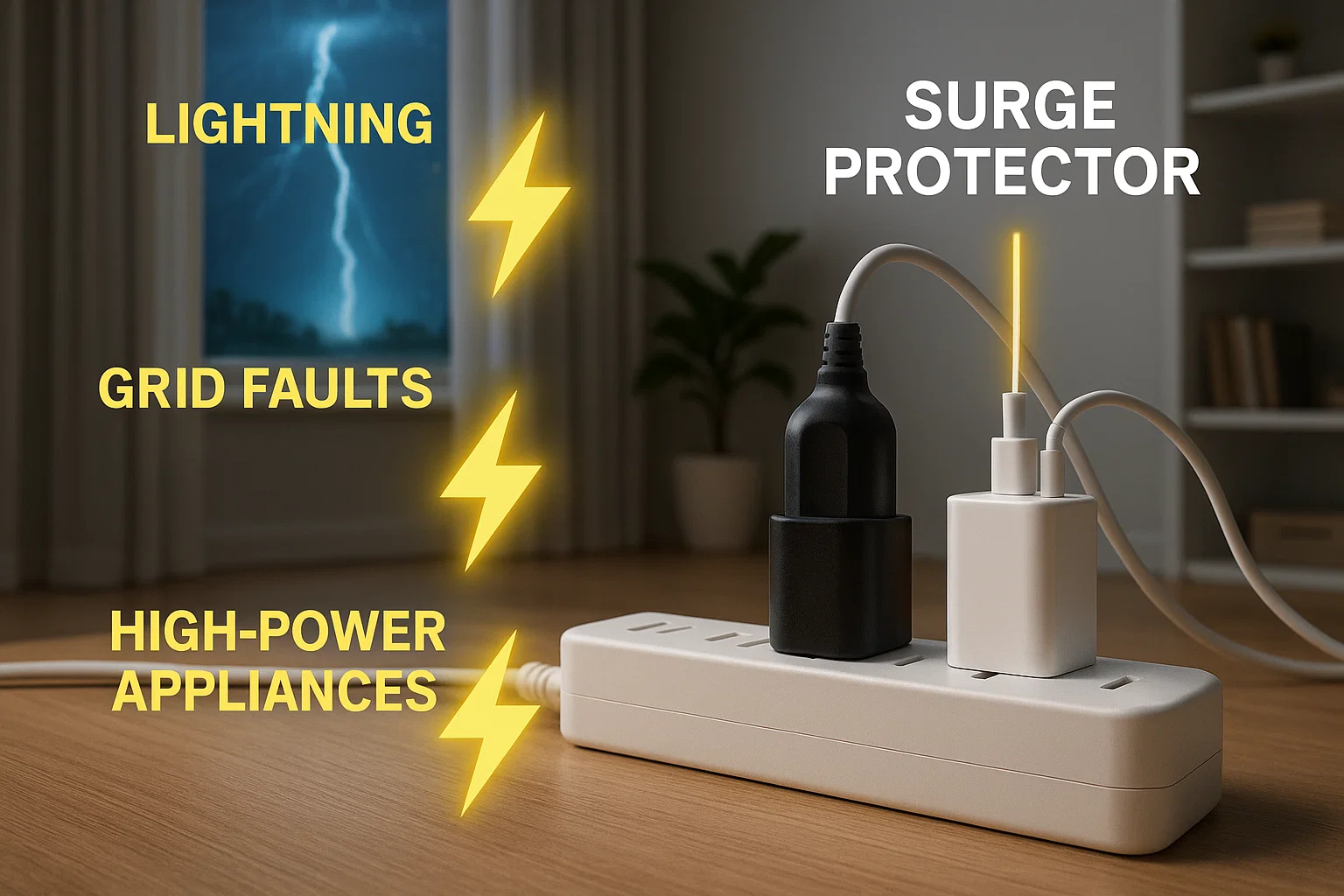
Why is this crucial for commercial buyers?
Your customer might use these for computers, printers, TVs, or other electronics. A surge protector can prevent costly damage.
What causes a power surge?
- Lightning strikes
- Power grid switching
- Large motors starting or stopping (like elevators, air conditioners)
How surge protection works
Surge protectors contain MOVs that detect excess voltage. These components absorb the extra energy and divert it safely. Once the MOVs wear out, protection drops—hence the importance of an indicator light.
| Technical Specs | Entry-Level Surge Protector | High-End Surge Protector |
|---|---|---|
| Joule Rating | 200–400J | 1000–3000J |
| Response Time | < 1 nanosecond | < 1 nanosecond |
| Clamping Voltage | ~400V | ~330V |
| Indicator Light | Sometimes | Always |
| Typical Retail Price | $8–$12 | $15–$30 |
Which one should you recommend for home and office use?
Buyers often ask, “Can’t I just use a cheaper strip?”
It depends. For lamps or fans, a power strip is fine. For electronics, surge protection is safer.
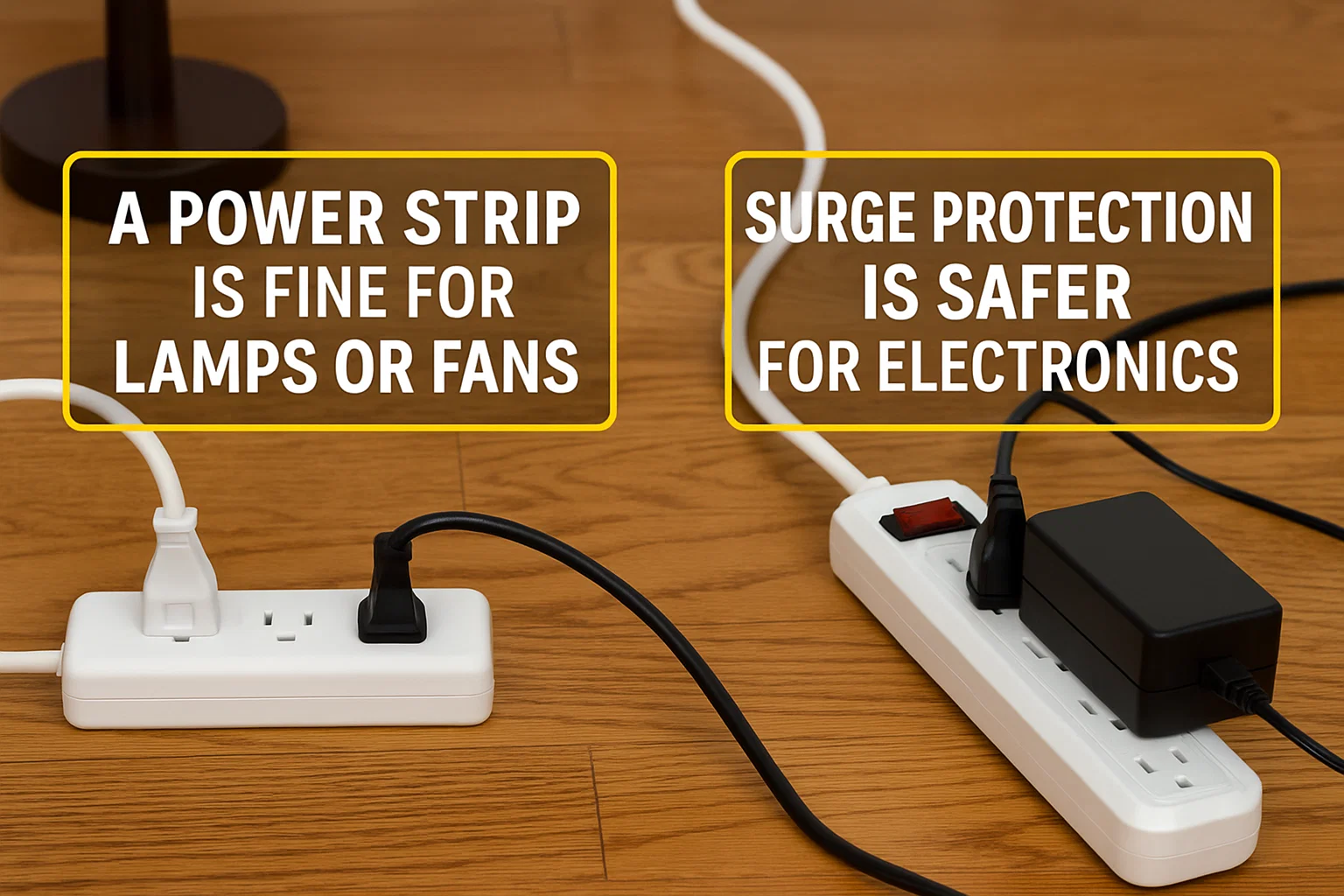
How I guide my customers
For example, one of my U.S. clients ordered 10,000 basic strips for holiday lights. No surge protection needed.
But when we supplied desktop surge protectors to a coworking space, surge safety was critical. They used computers, routers, and projectors—all vulnerable to voltage spikes.
Practical Recommendations
| Application | Recommended Product |
|---|---|
| TV, router, computer | Surge Protector |
| Holiday lights, chargers | Power Strip |
| Gaming setups | Surge Protector with USB |
| Small kitchen appliances | Power Strip |
The biggest mistake? Using a basic strip for high-value electronics.
Do certifications matter for surge protectors?
Yes. In fact, this is where many new buyers fall into traps.
Only certified surge protectors guarantee tested performance. Always look for ETL, cETL, or UL marks.
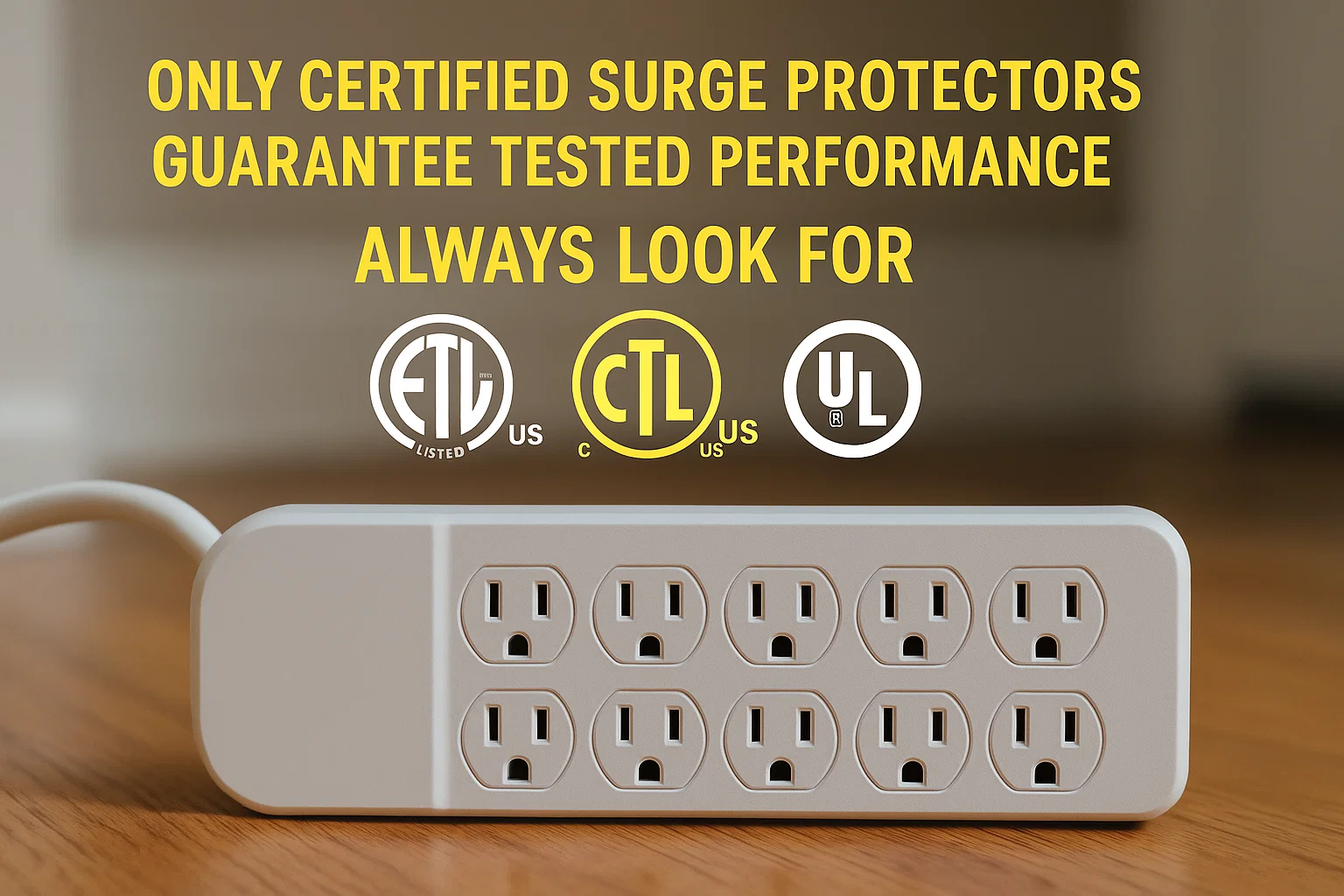
Why certification protects your reputation
As a B2B supplier, my buyers rely on me to deliver products that pass import inspections and customer audits. That’s why I ensure every model we sell is ETL or cETL certified.
Key Certifications to Look For
| Certification | Region | Meaning |
|---|---|---|
| ETL | US & Canada | Certified to North American safety standards |
| cETL | Canada | ETL equivalent with Canadian compliance |
| UL | US | Gold standard of U.S. safety testing |
| CE | Europe | Meets EU safety, health, and environmental requirements |
I’ve seen customers lose entire shipments because products failed inspection. You can avoid that risk by choosing certified surge protectors from the start.
What about USB charging and smart IC?
Now that devices are more compact and mobile, your customers expect USB charging built-in.
Smart IC recognizes the connected device and delivers optimal current. It’s safer and more efficient.
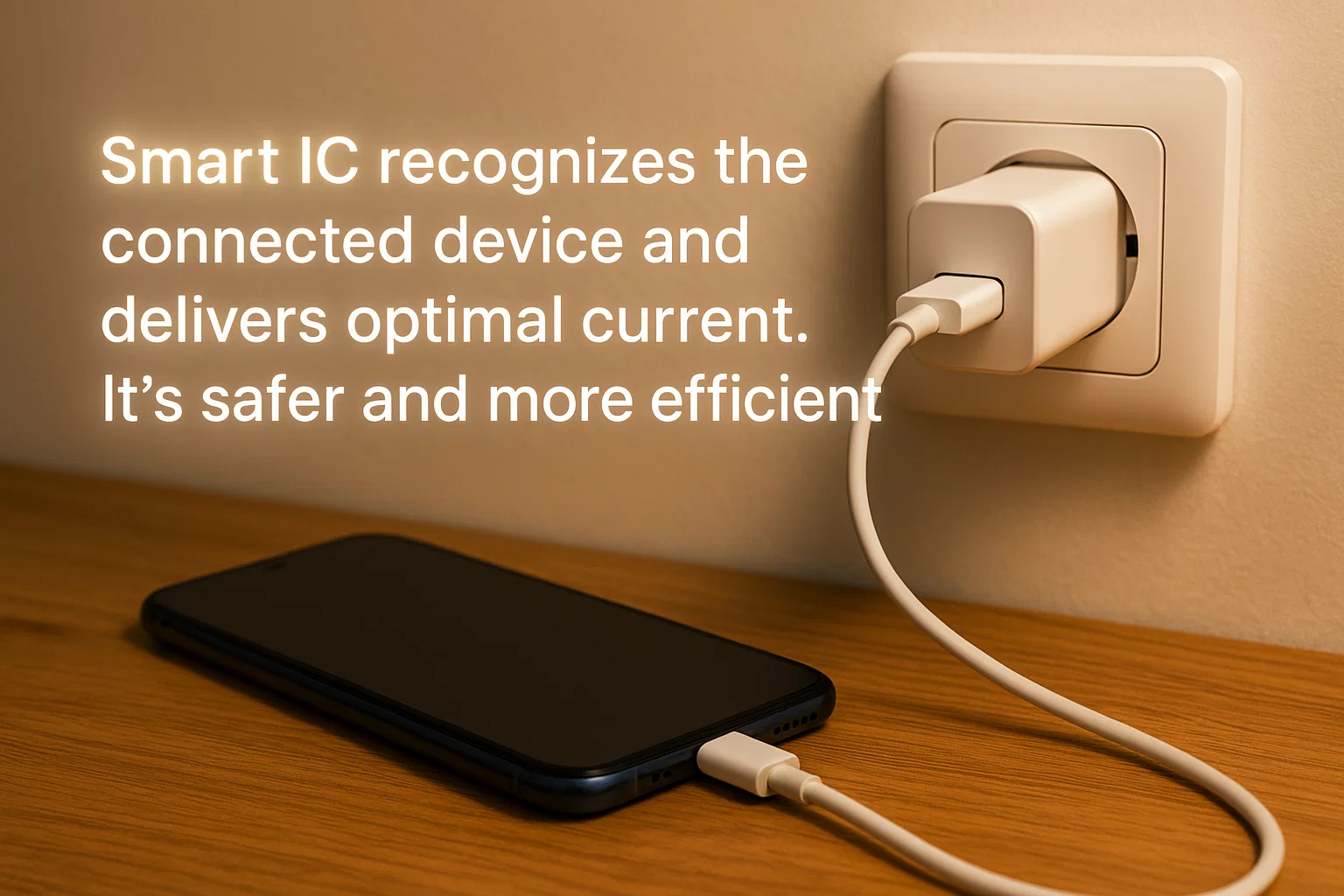
USB Ports in Power Strips vs Surge Protectors
More buyers now ask for USB-C PD or QC3.0 support. I’ve worked with clients who need to charge tablets, phones, or even lightweight laptops directly.
| USB Feature | Power Strip | Surge Protector with USB |
|---|---|---|
| USB-A Ports | Yes | Yes |
| USB-C PD (20W–35W) | Rare | Common |
| Smart IC Technology | Sometimes | Frequently |
| Fast Charging Support | Limited | Yes |
For my North American clients, we now offer surge protectors with 2 USB-A and 2 USB-C ports, supporting PD 35W and QC 18W. These help them reduce wall clutter and cable use in both offices and homes.
Conclusion
Surge protectors offer safety and reliability; power strips offer convenience.


